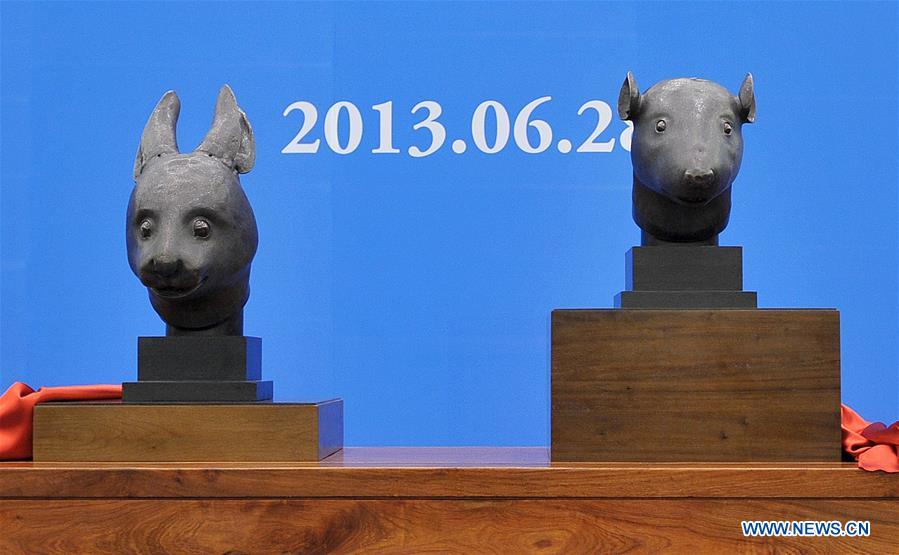
From the People’s Daily app.
And this is Story in the Story.
China is among the countries most seriously affected by the loss of cultural relics overseas, due to Invasions by foreign forces in the late 19th century, the large-scale smuggling of cultural relics by Western adventurers to China in the early 20th century and Japanese aggression during World War II.
Scholars and experts agree that cultural relics stolen and lost overseas should be returned to their true owners, the countries of origin.
In recent years, the Chinese government has recovered more than 4,000 looted artifacts through diplomatic and business negotiations, as well as moral and judicial pressure. Still, it's estimated that more than 10 million Chinese cultural relics have been lost overseas via various illegal means.
Today’s Story in the Story looks at what efforts Chinese government takes to repatriate illicitly exported cultural relics.

The Bronze Tiger Ying looted from Yuanmingyuan, or the Old Summer Palace, returns to China and is displayed at a ceremony to mark its entering the collections at the National Museum of China in Beijing, capital of China, Dec. 11, 2018. (Photo: Xinhua)
A Chinese bronze vessel looted from Yuanmingyuan, or the Old Summer Palace, has recently returned to China and entered the collections at the National Museum of China in Beijing, capital of China, on December 11.
The vessel, known as the Bronze Tiger Ying, was auctioned in April by Britain's Canterbury Auction Galleries.
The buyer, through the auction house, contacted China's State Administration of Cultural Heritage (SACH) in late April and expressed hope for an unconditional donation.
Resources show the vessel, once belonging to the royal family of the Qing Dynasty (1644-1911), was taken away by British military officer Harry Evans from the Old Summer Palace, which was sacked and destroyed in 1860 during the invasion of Anglo-French allied forces.
Representatives from SACH and experts with the National Museum of China visited Britain in September to authenticate the bronze vessel, which dates back to the Western Zhou period (1046 BC-771 BC).
Liu Yuzhu, head of SACH, said SACH has in recent years successfully facilitated the return of many lost cultural relics to China, and the return of the Bronze Tiger Ying is a representative model.

File photo taken on June 28, 2013 shows two bronze animal head sculptures plundered by western invaders one-and-a-half centuries ago at a handover ceremony of the heads in Beijing, capital of China. (Photo: Xinhua)
On June 28, 2013, two bronze animal head sculptures plundered by western invaders one-and-a-half centuries ago at a handover ceremony of the heads in Beijing, capital of China. The heads of a rat and a rabbit, parts of a fountain clock that previously stood at the Old Summer Palace (Yuanmingyuan) were donated on April 26, 2013 by the Pinault family.
"Chinese cultural relics lost overseas are an important component of the cultural heritage of our country," said Liu, adding they bear the profound history and cultural emotions of the Chinese people.
China has signed bilateral cooperation agreements with 20 countries on repatriating illicitly exported cultural relics.
“Many countries have returned Chinese relics, including America and Denmark. So far, over 3,000 pieces are back home. Some were returned by donation, while others came back through diplomatic or business processes. In general, purchasing is not the first option,” said Guan Qiang, Vice Director of National Cultural Heritage Administration.
(Produced by Nancy Yan Xu, Elaine Lin, Brian Lowe, Lance Crayon and Da Hang. Music by: bensound.com. Text from Xinhua, China Daily and CGTN.)


